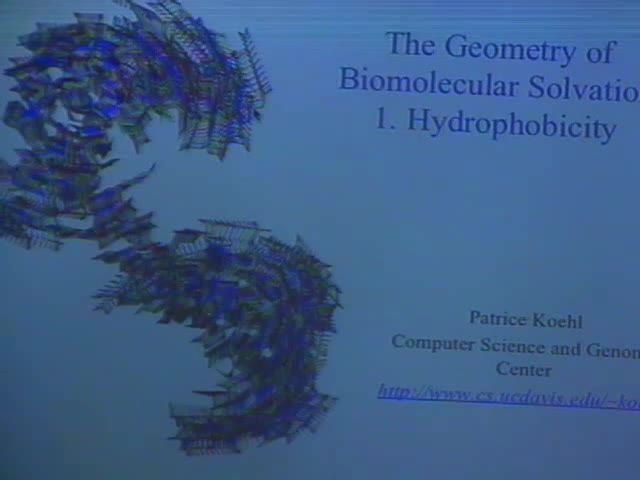The geometry of biomolecular solvation. Part 1: Hydrophobicity
Presenter
January 10, 2008
Abstract
The molecular basis of life rests on the activity of biological
macro-molecules, mostly nucleic acids and proteins.
A perhaps surprising finding that crystallized over the last handful of
decades is that geometric reasoning plays a major role in our attempt
to understand these activities.
In my presentations, I will explore the connection between the
biological activities of proteins and geometry, using a representation
of molecules as a union of balls.
I will cover three topics: (1) the geometry of biomolecular solvation,
(2) understanding electrostatics using implicit solvent models,
and (3), designing protein shape descriptors.
Part 1: Hydrophobicity. The structure of a biomolecule is
greatly influenced by its environment in the cell, which mainly consists
of water. Explicit representation of the solvent that includes individual
water molecules are costly and cumbersome. It is therefore highly desirable
to develop implicit solvent models that are nevertheless accurate.
In such models, hydrophobicity is expressed as a weighted sum of atomic
accessible surface areas. I will show how these surface areas can be computed
from the dual complex, a filtering of the weighted Delaunay triangulation of
the centers of the atoms.
